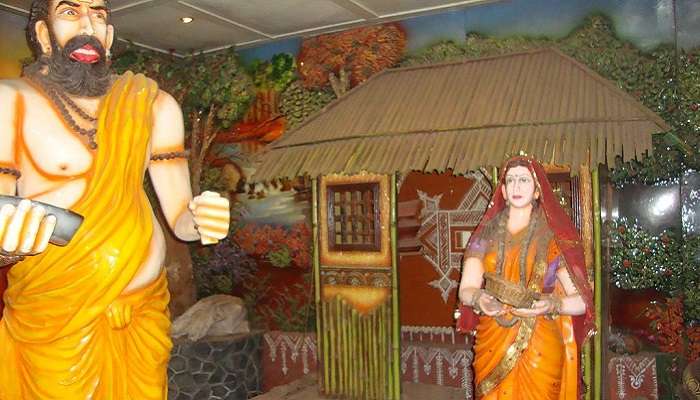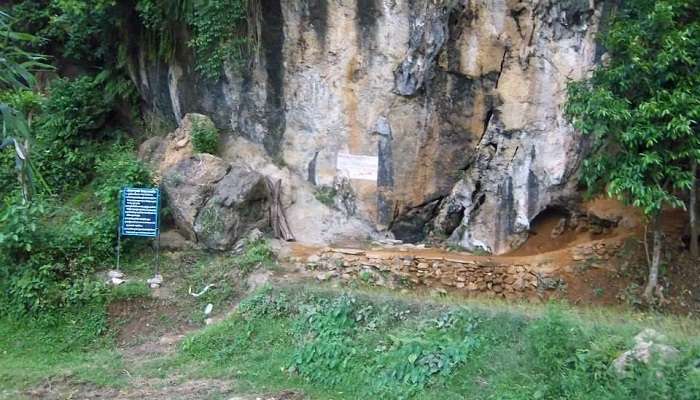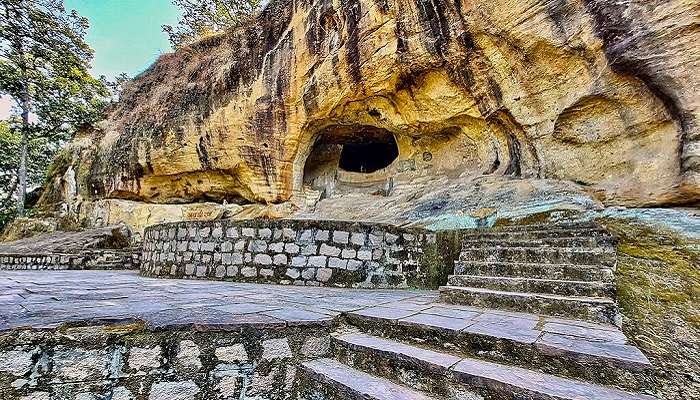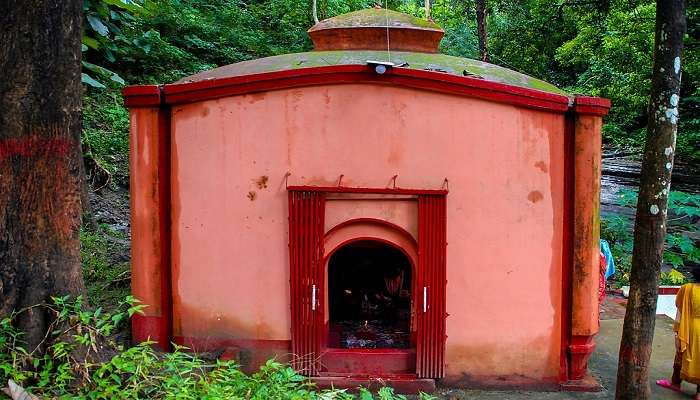Sita Gufa Is An Ancient Cave Of Immense Religious Significance You Must Visit In 2025

India is full of mysteries and wonders that are out of this world. From deep, elusive caves to the mystical forests, there is much to explore, wander, and examine. In this blog, we shall dive deep into the details of one such spot- the Sita Gufa. The cave is essential not just from a tourist perspective but from a cultural point of view, too. The underrated spot is an iconic testament to India’s rich and ancient culture, making us wonder why we should never ignore our ancestors’ work and intelligence. You will learn all about it and even more in this piece of writing.
Overview Of Sita Gufa

Sita Gufa, or Sita Gufa, is an integral part of the storyline of contemporary Hinduism in the epic tale known as the Ramayana. Sita, Lord Rama’s consort from the Ramayana, lived at this very spot as per the legendary mythology. After serving out his fourteen years of jungle exile, Rama settles for a long time in Panchavati, a region in modern-day Nashik, Maharashtra. Legend has it that the wicked king of Lanka, Ravana, abducted Sita from her cave at this spot.
Pilgrims who travel to Panchavati for a more profound encounter with the Ramayana narrative often visit the Sita Gufa. The cave, accessible by a small staircase, is close to the five sacred banyan trees. Upon entering, you will see an idol of Sita beside Rama and Lakshman, who is Rama’s brother. A Shiva Linga can be found in a cave off to the left.
Also Read: Muktidham Temple
Significance Of Sita Gufa

Sita Gufa is located near the sacred town of Nashik and holds profound spiritual importance for the Hindu community. The major reason is the palace’s linkage with the epic Ramayan. The ancient cave is a revered pilgrimage place, drawing devotees from all across India and beyond. The spiritual significance has multiple assets, including mythological connections, spiritual legends, and religious practices by those who visit here.
Sita Gufa is linked to Ramayana and is an important temple for Lord Rama and Goddess Sita. The abduction of Sita from this cave and the subsequent events imbue this cave with an intense spiritual resonance. This is why locals and tourists visit the place daily.
Inside The Caves

Travellers and devotees usually access the cave by entering near the five holy banyan trees in the area through a tiny staircase that leads into the cave. The entrance is accessible to everybody. Sita, Rama, and Lakshman are all depicted inside, along with Sita’s idol. In the cave over there, on the left side, you’ll find a Shiva Linga. Even though it’s only about 2.5 to 3 meters deep, the cave is brimming with spiritual energy. People with hypertension, asthma, vertigo, or obesity, as well as those with heart or lung conditions, should not enter Sita Gufa.
Sita Gufa caverns, where Sita Mata and Lord Rama spent their fourteen years of exile, is a small cave that only one person can enter. The cave is interesting, depicting the walls and stories of a bygone era. Once you step inside, you will be transported to the times of the Ramayana and can feel the spiritual essence of the goddess Sita.
Related Post: Shri Vyankatesh Balaji Mandir
Things To Do At Sita Gufa

Just 500 meters from the cave is an important place called the Ramkund, a holy bathing dam on the Godavari River. Approximately 200 meters from the cave is the ancient Hindu Kalaram temple devoted to Lord Rama. It’s another revered place and a must-see when exploring Sita Gufa.
The “Kapaleshwar temple” is another unique place to visit. It is among the most iconic Shiva temples and is essential due to the absence of the mythical Nandi bull. Its distance from the cave is barely 450 meters. Another iconic place to see and venture is the Trimbakeshwar Temple. The temple is where the Godavari River begins its journey from the Brahmagiri mountains. Temple is at its best thirty kilometres from the cave. Near the Sita Gufa, you can find four or five places of worship. Also, seeing these types of locations could take a whole day. Eating lunch at one of the local joints close to the cave is recommended.
Timings And Getting There

Getting to Sita Gufa is relatively easy. The place is well-connected to all the important routes of the city. The nearest railway station is just 5km away from the cave. The Nashik is the nearest railway station you can access via the Vani- Dindori Road. The nearest airport is the Nashik Airport, around 19.2km from the temple. The cave is just 2.4 km away from the Nashik Central Bus Stand. This bus stand is well-connected to all the region’s big cities.
The Sita Gufa and the temple are open all day but open at 6:00 AM and close at 9:00 PM. Bring water, snacks, and a flashlight if you visit the cave in the early morning or late evening. Maintaining silence and decorum inside the cave and temple premises is important. Photography might be restricted in some areas. Also, remember to bring ample water, as Nashik can get pretty hot in summer.
Related Post: Nashik Caves
The Revered Sita Temples

Rama and Sita’s tale isn’t just an Indian one. Several nations are linked to the myth, including Nepal and Sri Lanka. Although Sita was taken by Ravana and confined in Sri Lanka, her birthplace is Janakpur in Nepal. In these locations, devotees can be found several Sita temples that are very sacred to them. You must see these temples to appreciate the myths and stories surrounding Sita’s existence.
Just like Sita Gufa, there are many lesser-known Sita temples. A popular one is the Seetha Devi, located on the Calicut–Mysore National Highway, around 20 kilometres from Meenangadi. The Sree Pulpally Seetha Lava Kusha shrine is another name for this Sita-dedicated shrine. Sita and her sons Lava and Kusa are both honoured at this site.
You May Also Like To Read: Trimbakeshwar Temple
Sita Gufa is not just a tourist spot but an experience that beckons you. The place is brimming with local culture and folktales of ancient history. When planning your trip to Maharashtra, include this place to make your tour far more interesting with promising memories. So why wait? Plan your next trip to Maharashtra today and embark on an unforgettable journey!
For our editorial codes of conduct and copyright disclaimer, please click here.
Cover Image Credit : Akshatha Inamdar for Wikimedia Commons
Frequently Asked Questions About Sita Gufa
What is the exact Sita Gufa Location?
The exact location is Sita Gufa Road, Panchavati, Nashik, Maharashtra 422003
How far is Sita Gufa from the Shirdi Pilgrimage?
Sita Gufa is approximately 96 km from Shirdi Pilgrimage, and it takes approximately 2 hours by road to travel between these destinations.
How is the temperature at Sita Gufa?
The temperature is usually warm. However, it can get pretty cold when you are inside the caves. During summer, the place becomes quite warm.
Is Sita Gufa open every day?
Yes, Sita Gufa is open for visiting every day
Is there a temple near Sita Gufa?
A temple devoted to goddess Sita is established near the cave for devotees.
People Also Read:
Pokhara Mahendra Gufa Siddha Gufa Arjun Gufa

With a passion for exploring and travelling to the roads long forgotten, experience the world through enthralling stories and adventures. Join me as I share my experiences at some of the world’s most popular tourist destinations and quench that pestering curiosity with something exciting!











